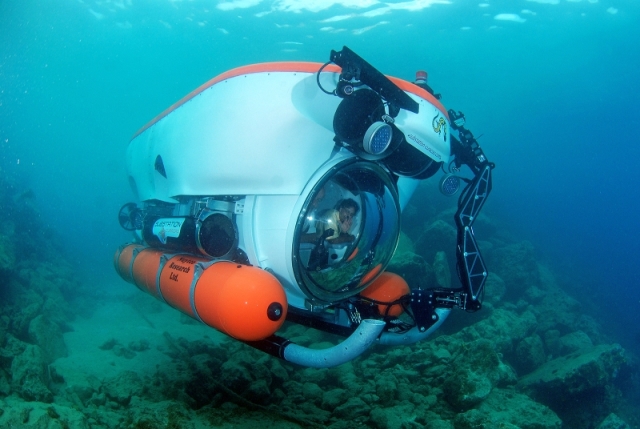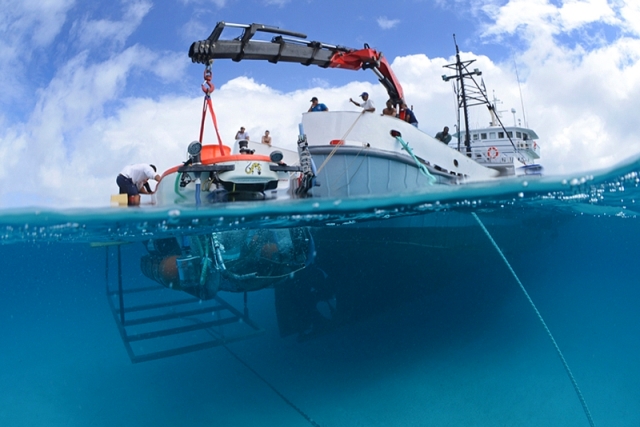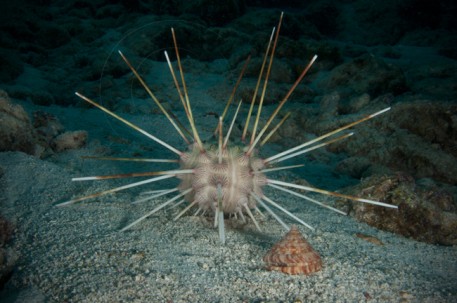
On May 30th and 31st and June 1st for the first time ever the deep reef of Bonaire will be studied during the "Bonaire Deep Reef Expedition 1". With the help of the submarine "Curasub" and the research ship "Chapman" of the Curaçao Sea Aquarium, the investigators of the IMARES institute from the Wageningen University will identify the biodiversity of the deep reefs. It is expected that new reef kinds will be found for science in these almost unexplored depths from 60 to 300 m. This study is executed on behalf of the Ministry of Economic Affairs with regard to the joint management by the islands and the Netherlands of the maritime biodiversity and fishery in the waters surrounding the islands, starting from the outer border of the maritime parks up to the Exclusive Economic Zone (Exclusieve Economische Zone – EEZ).

Study
This study in the deep reef should provide information on life existing in these dusky depths. With the use of camera’s and collecting biological specimen, this fascinating ecosystem with unique biodiversity will be documented. The international nature organization Conservation International identified the Caribbean Region in its total as a hotspot of biodiversity – an area with outstanding varied ecosystems, and various kinds of plants and animals. Furthermore, the area within the South Caribbean maritime area surrounding the Windward Islands was identified as one of the two with the richest maritime lives. The "Curasub" has already made many dives on Curaçao, including dives with investigators of the Smithsonian Institute on board, who discovered various new species of fishes, shells and crabs. The "Bonaire Deep Reef Expedition 1" amongst others will clarify if these species are also present on Bonaire or if other species are present in these waters.

Goal
The goal of the "Bonaire Deep Reef Expedition 1" is to make a first inventory of the biodiversity. This information is essential for the protection of the nature and durable use of the reefs. It is an international responsibility for the countries to identify and map the biodiversity. To protect the deep reefs well, we must first know what lives there and gain knowledge regarding the ecological processes which conserve the diversity. It is also important to map this richness of life, because they could possibly be a source of materials which could turn out to be of great value in the future.
This study is executed by experts of the Dutch research institute IMARES in collaboration with the microbiologists of the Wageningen University and the taxonomists from the Naturalis Biodiversity Center in Leiden. An investigator of the Smithsonian Institute in the United States will also participate in the expedition. Besides fishes, shells and crab-like animals, the expedition will also study deep water horn corals and sponges. The "Curasub" is able to take samples of sponge and coral, pick up shells and even catch living fishes at that depth. All the samples will also be documented en sampled photographically for molecular markers which will be analyzed in Naturalis’ laboratory.
Research ship
The "Curasub" will be transported from Curaçao to Bonaire on the research ship the "Chapman" which has been bought from the University of Puerto Rico by the owner of the Curaçao Sea Aquarium, Adriaan (Dutch) Schrier. After a complete renovation and redesign a few months ago, this ship is ready for expeditions and to let the "Curasub" enter the water.
The "Chapman" arrives in Bonaire on May 29th and will moor in the harbor, from where the first dives will take place on May 30th . The following days diving will take place from respectively the WEB pier at Hato and the Cargill pier.

